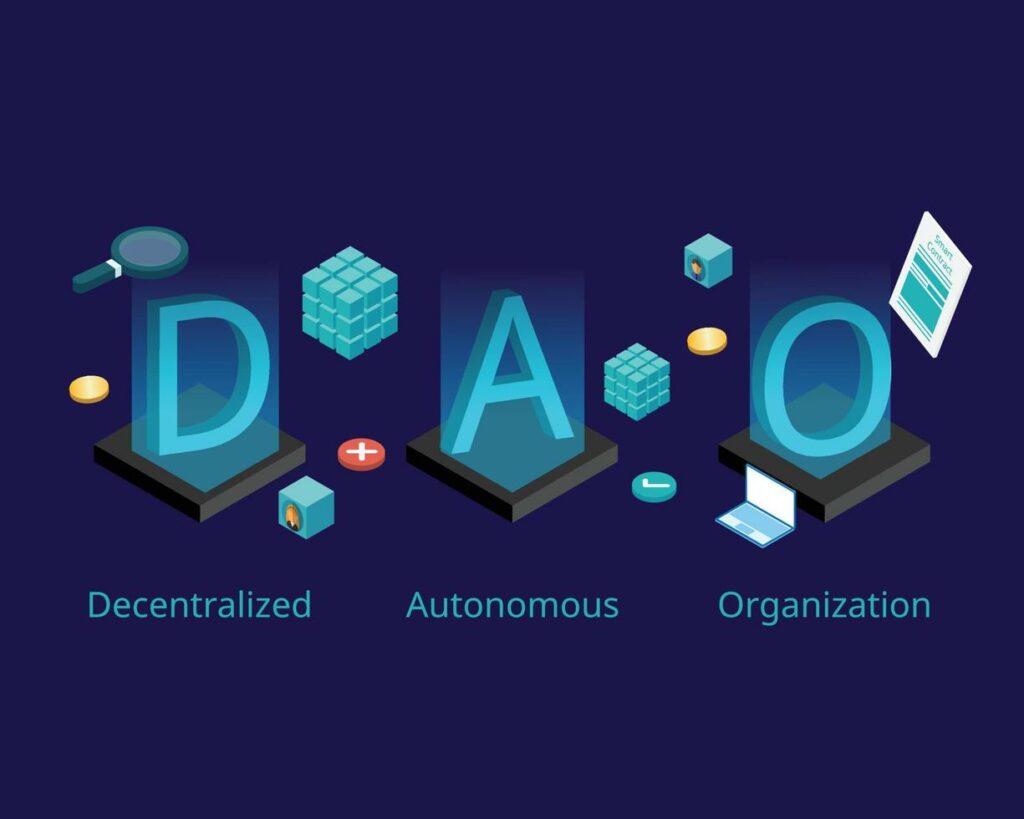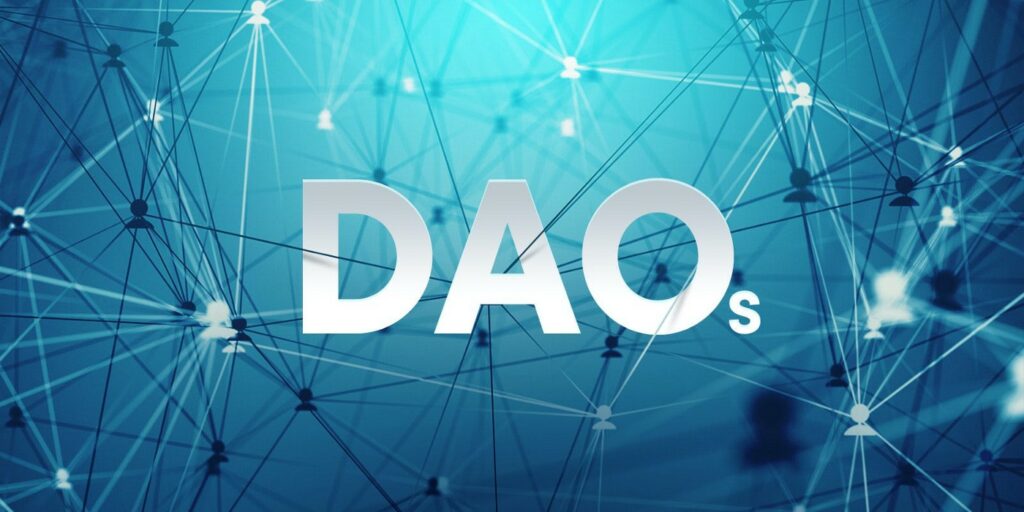Key Points:
- In 2016, a hacker stole approximately $60 million worth of Ethereum from a decentralized autonomous organization (DAO) called “The DAO.”
- The DAO was a blockchain-based investment fund where members could vote on how to allocate funds.
- The hack occurred due to a vulnerability in the DAO’s code that allowed the attacker to “split” the organization and redirect funds to their address.
- The hack resulted in a contentious hard fork of the Ethereum blockchain, with some members advocating for a rollback to recover the stolen funds.
- The DAO hack remains one of the most significant events in the history of blockchain technology and has led to increased scrutiny of smart contract security.
DAO, or decentralized autonomous organization, is a new way for investors to fund businesses they believe in and make a difference in the world. Despite its potential, the concept was rocked by a significant heist and fraudulent actions that have caused concern among its supporters.

The infamous DAO Heist was a cyber attack that resulted in the theft of millions of dollars worth of digital currency from the DAO. In the aftermath, the community that created the DAO came together to try to fix the damage.
Despite the setback, proponents of the DAO concept believe that it still holds great promise for the future, and efforts are ongoing to prevent future incidents and ensure that investors can continue to use this innovative model to invest in the businesses they believe in.
Genesis DAO

In 2016, the first Decentralized Autonomous Organization (DAO) was introduced on the Ethereum blockchain. Dubbed the Genesis DAO due to its pioneering status, it sparked excitement in the community with its potential to fund companies and projects that members supported directly. The DAO was a cutting-edge project that had not been attempted before and was seen as forward-thinking.
The idea behind the DAO was simple: members could invest in a pool by purchasing tokens, which represented their share of the organization, and have a say in how capital was allocated. The DAO was essentially a virtual crowdfunding cooperative, where profits were shared among members.
However, the DAO’s credibility and viability were called into question after a well-known heist, causing widespread fear among investors. Despite its initial success, the DAO’s future remains uncertain.
Creating the DAO

Decentralized Autonomous Organization (DAO) is a unique type of cooperative that operates using computer programs and rules voted upon by members worldwide. The organization is made up of various funds contributed by decentralized individuals, and everything is stored on a blockchain for security.
Blockchain-based security is believed to be impregnable, and the DAO provides an opportunity for younger or smaller investors to invest in alternative assets.
When someone invests their virtual currency in the DAO, their token represents potential capital gains and voting rights in community affairs, including investment allocation.
Business pitches are presented by investors, and a voting process determines whether a proposal is approved or denied. In the case of the Genesis DAO, if a project received more than 20% of all tokens as proxies for approval, the DAO would transfer Ether cryptocurrency to the winning proposal automatically. Any excess Ether generated by the funded proposal as profit would be returned to investors as capital gains.
The creators of the Genesis DAO were also concerned about protecting minority voters’ rights. With only a 20% approval threshold required for proposal acceptance, there was a risk that many investors might disagree with the decision.
To address this concern, the developers of the Genesis DAO came up with a plan that would enable minority investors to recover their funds if a project they did not support was approved and funded by the DAO. They could divide their tokens into a “child DAO,” which would allow them to get their Ether back after a waiting period of 48 days.
Interestingly, the concept of a child DAO would later play a significant role in the heist that took place within the DAO.
The Hack
During this period, some individuals raised concerns about possible hacker infiltration into the system. These concerns were based on identified weaknesses in the DAO system, which were brought to the attention of the developers and leadership. However, before the developers could address the highlighted security holes, a group of hackers managed to break into the smart contracts that underpinned the system.
This hack enabled the hackers to steal more than 3.6 million coins, representing over 28% of the total 12.7 million Ether that had been raised, with a value of about $70 million at the time. The question on everyone’s mind was how the hackers were able to penetrate the system. According to reports, the attackers exploited two vulnerabilities in the smart contract and the ability to split into a child DAO.
The first vulnerability was related to the coding of the smart contract. Specifically, the programmers did not anticipate the possibility of a recursive call exploit, which allowed the attackers to call the same function repeatedly and gain control of the system.
The second vulnerability was due to how the smart contract handled funds. It would send out ETH funds first, and then update the remaining balance afterward. This allowed the hackers to continuously withdraw funds from the system without the balance being updated, effectively giving them control over the system.
It is unclear who was behind the attack or whether they acted alone or as part of a larger group. The incident raised serious concerns about the security of blockchain systems and the need for robust security measures to be put in place to prevent similar attacks from happening in the future. The DAO hack remains one of the largest security breaches in the blockchain ecosystem’s history and continues to be studied and analyzed by experts to prevent similar attacks from happening again.
According to reports, the individual or group responsible for the DAO attack was able to initiate a split into a child DAO, which allowed them to move the Ether from the Genesis DAO to the child DAO. The smart contract code for this process would move the Ether to the child DAO first and then check the balance later. This created an opportunity for the hacker to exploit a recursive loop and retrieve the funds multiple times before the code checked the balance.
By taking advantage of this vulnerability, the attackers were able to steal 3.6 million Ether, representing a value of around $70 million at the time. However, despite having the opportunity to drain the entire 12.7 million Ether raised, the hacker inexplicably stopped their attack before doing so.
The attack on the DAO raised serious concerns about the security of blockchain systems, highlighting the need for more robust security measures to be put in place to prevent similar attacks in the future. The incident sparked a debate within the blockchain community about the role of decentralized autonomous organizations and the need for stronger governance structures to ensure their security and integrity.
In the aftermath of the DAO attack, a hard fork was initiated to undo the damage caused by the hack. This hard fork effectively created two separate blockchains, one of which continued to operate on the original code, while the other implemented changes to address the vulnerabilities exploited by the attackers.
Despite the hard fork, the DAO hack remains one of the most significant security breaches in the history of blockchain technology. It continues to be studied and analyzed by experts in the field to understand the nature of the attack and develop strategies to prevent similar attacks from occurring in the future.
DAO hack served as a wake-up call for the blockchain community, highlighting the need for greater attention to security and the development of more robust governance structures to ensure the integrity and security of decentralized autonomous organizations.
The Response
DAO hack, investors were left uncertain about what to do next. The Ethereum network was relatively new at the time and there was a lot of uncertainty around how to respond to the theft of 3.6 million Ether, which represented about 17% of the total amount of Ether tied up in the DAO.
In an attempt to reassure investors, Vitalik Buterin, the founder of the Ethereum network, proposed a “soft fork” that would prevent the hackers from moving the funds to their hidden accounts. However, tensions rose further when a letter allegedly from the hacker group was released to the Ethereum community. In the letter, the hackers claimed that their actions were legitimate and that the funds they had taken were rightfully theirs. They also threatened legal action against the DAO if it attempted to recover the funds.
In addition to these threats, the miners who ran the blockchain system were reportedly offered a collective reward of 1 million Ether and 100 BTC to not comply with any soft forks that might be implemented to recover the stolen funds.
The situation was further complicated by the fact that the DAO was a decentralized autonomous organization, meaning that there was no central authority that could make decisions about how to proceed. As a result, the community was left to grapple with the aftermath of the hack and to try to find a way to recover the stolen funds.
Ultimately, a hard fork was implemented that effectively created two separate blockchains, one of which continued to operate on the original code while the other implemented changes to address the vulnerabilities exploited by the hackers. This decision was controversial, as it went against the principle of immutability that underpins blockchain technology. However, it was seen by many as necessary in order to recover the stolen funds and to prevent similar attacks from occurring in the future.
The DAO hack was a significant event in the history of blockchain technology, highlighting the need for greater security and governance structures to ensure the integrity and security of decentralized systems. It also sparked a debate about the role of immutability in blockchain and whether it should be sacrificed in order to recover stolen funds.
Fortunately, due to the nature of the DAO hack, the hacker was not able to immediately transfer the stolen Ether to their own account. This allowed the Ethereum community to have a window of time to decide on a course of action. After much debate, the community ultimately decided to implement a hard fork, which would overwrite the blockchain history and restore the stolen Ether to the original investors. This effectively reversed all transactions on the Ethereum blockchain.
However, not all nodes in the network followed the main branch, which created a new blockchain and cryptocurrency called Ethereum Classic. This was a controversial decision that sparked a debate about the role of immutability in blockchain technology. Some argued that the hard fork went against the fundamental principles of blockchain, while others saw it as a necessary step to recover the stolen funds and prevent similar attacks in the future.
The hard fork was successful in recovering the stolen Ether and restoring confidence in the Ethereum network. However, it also highlighted the challenges of governance in decentralized systems and the need for more robust security measures to prevent attacks like the DAO hack from occurring in the first place.
Despite the controversy surrounding the hard fork and the creation of Ethereum Classic, both Ethereum and Ethereum Classic continue to exist as separate cryptocurrencies with their own communities and development teams. The DAO hack remains a significant event in the history of blockchain technology, serving as a cautionary tale about the importance of security and governance in decentralized systems.
Conclusion
The attempted heist that occurred within the Genesis DAO was primarily caused by the smart contracts that were integrated into the system. Although some people had identified weaknesses in the system and raised concerns with DAO developers and leadership, the security holes had not been fixed when a group of hackers exploited them and broke into the smart contracts.
Through the use of a recursive loop and the ability to split into a child DAO, the hackers were able to steal over 3.6 million coins, which amounted to $70 million at the time. While the hacker(s) did not drain the entire 12.7 million Ether raised, their actions left investors uncertain of what to do, particularly given the newness of the Ethereum network that powered Ether, and the fact that around 17% of the total Ether was tied up in the DAO.
Vitalik Buterin, the founder of Ethereum, proposed a “soft fork” as a solution, along with coding to prevent the hackers from transferring the funds to their own accounts. However, a letter from the alleged hackers argued that their actions were legitimate and that the funds were rightfully theirs, threatening legal action if the DAO attempted to recover them. The miners who ran the blockchain system were also offered a reward to not comply with any soft forks, adding further tension to the situation.
Eventually, the Ethereum community agreed on a hard fork to restore the stolen Ether to the original investors, reverting all transactions done on the entire Ethereum blockchain. This decision was not without controversy, as not all nodes followed the main branch, leading to the creation of a new blockchain and cryptocurrency, Ethereum Classic.
The aftermath of the DAO heist highlighted the vulnerability of blockchain technology and cryptocurrency systems, attracting regulatory attention to crowdfunding and causing embarrassment for Ethereum. The hard fork also changed the perception that cryptocurrencies were immutable. Overall, the incident demonstrated the need for robust security measures to prevent future hacks and heists from occurring within the cryptocurrency industry.
DISCLAIMER: The Information on this website is provided as general market commentary and does not constitute investment advice. We encourage you to do your research before investing.
Join us to keep track of news: https://linktr.ee/coincu
Website: coincu.com
Annie
Coincu News















